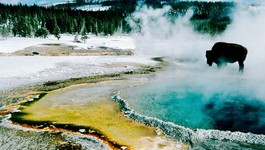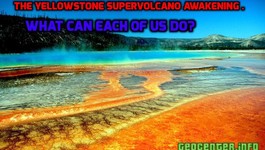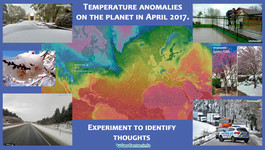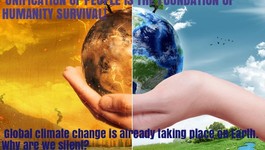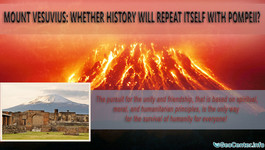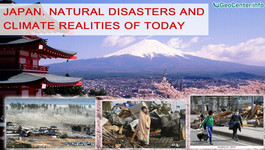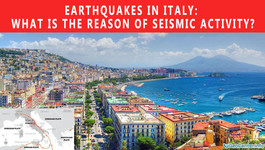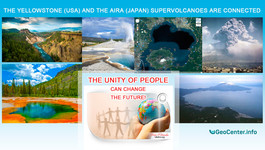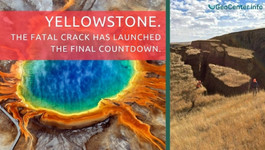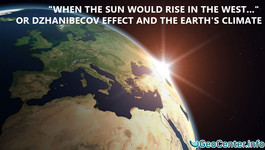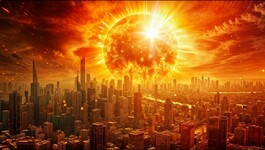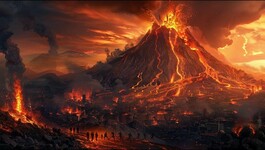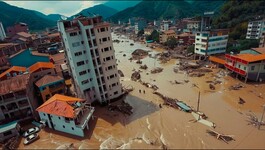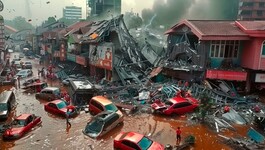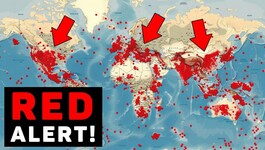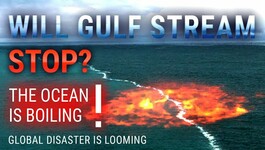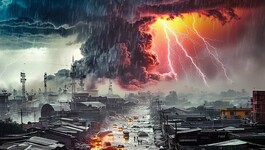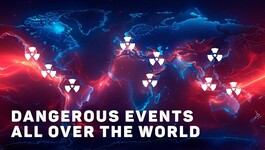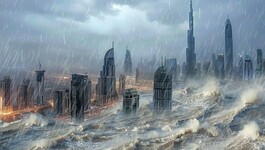Italian Supervolcano Campi Flegrei Is Showing Signs of Reawakening
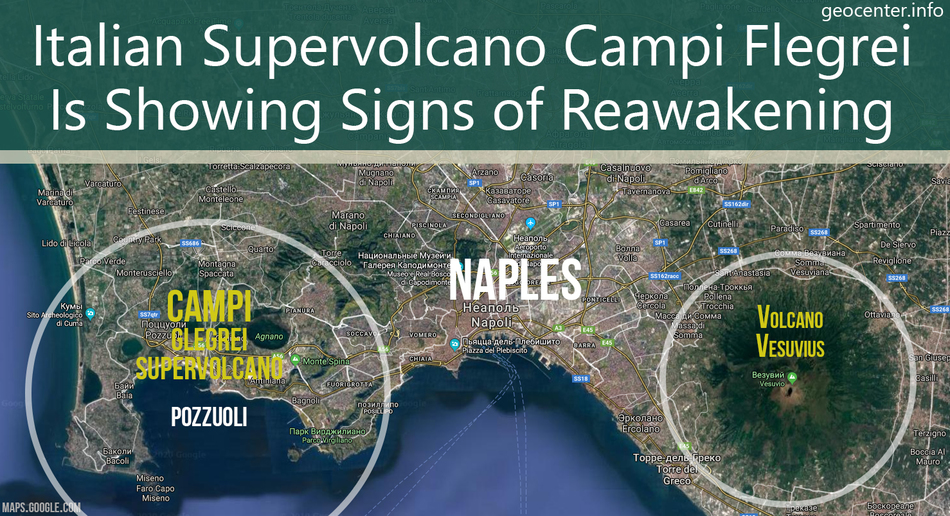
While scientists’ attention is focused on studying and hopefully predicting the behavior of Earth’s biggest supervolcano in Yellowstone National Park [1], another supervolcano, Campi Flegrei, seems to be showing the signs of reawakening. A recent study by the scientists from the National Institute of Geophysics and Volcanology in Bologna, published in the journal Nature Communications [2], states that, “Of the several quiescent calderas worldwide, Campi Flegrei has recently shown among the clearest signs of unrest.”
What is Campi Flegrei supervolcano?
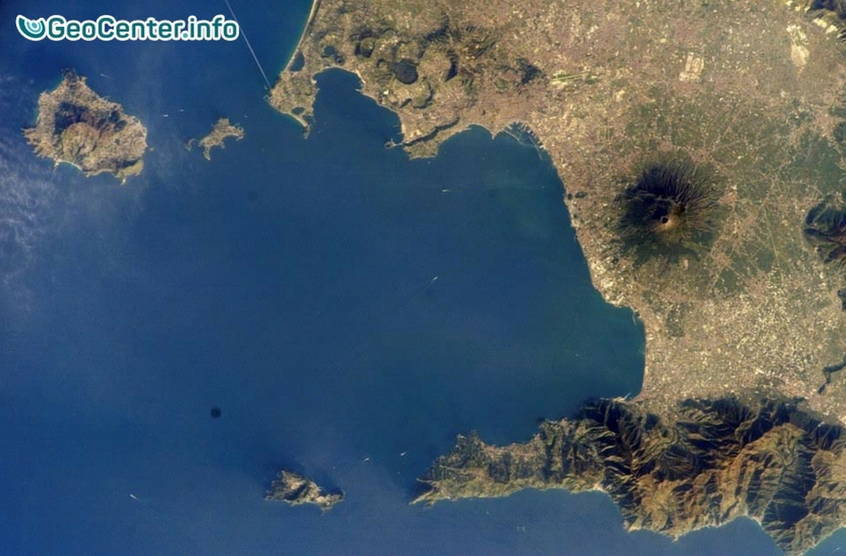
Aerial view of Bay of Naples, Phlegraean Fields and Mount Vesuvius (Image credit: NASA/JPL)
Campi Flegrei, meaning "burning fields" in Italian, is the volcanic region located west of the city of Naples, Italy and also known as the Phlegraean Fields. As is the case with other supervolcanoes, Campi Flegrei is not a single volcano cone, but a whole complex which is also surrounded by three other quaternary volcanic centers (Ischia Island, Procida Island, Vesuvius) [3]. Much of the complex is located either underground or under the Mediterranean Sea. It includes 24 craters and various geysers and vents that can release hot gas. Its caldera, the collapsed top of the ancient volcano that formed when the magma within erupted, is almost 8 miles wide.
It is believed that Campi Flegrei has formed hundreds of thousands of years ago. An eruption 200,000 years ago was so massive that it has triggered a "volcanic winter." The volcano then erupted again 35,000 and 12,000 years ago. Though still debated, there is a theory that an eruption about 40,000 years ago might have contributed to the extinction of the Neanderthals [4]. There was another, smaller, eruption in 1538 which lasted eight days and caused the creation of Monte Nuovo mountain. Since that time the volcano has not shown many signs of activity until 2012, when the status of the volcano was changed from ‘green’ (quiet) to ‘yellow’ (scientific attention). Now a team led by volcanologist Giovanni Chiodini from the Italian National Institute of Geophysics in Rome reports that Campi Flegrei appears to be approaching a critical pressure point that could trigger another eruption.

Changes of gas pressure and temperature are common precursors to an eruption (Image credit: Nature.com)
What does Campi Flegrei reawakening mean?

Campi Flegrei (Image credit: Alamy)
The scientists from the Italian National Institute of Geophysics have reported that based on physical measurements and computer modeling, "we propose that magma could be approaching the CDP [critical degassing pressure] at Campi Flegrei, a volcano in the metropolitan area of Naples, one of the most densely inhabited areas in the world, and where accelerating deformation and heating are currently being observed." [2] Clearly, nobody can predict the course of events and when and how big the eruption will be, however, as Giuseppe De Natale, head of a project to monitor the volcano, told Reuters back in 2012 “These areas can give rise to the only eruptions that can have global catastrophic effects comparable to major meteorite impacts." [5] And even though Campi Flegrei is not among the biggest supervolcanoes on Earth, “The Campi Flegrei are similar to the Yellowstone caldera in the U.S. state of Wyoming but of more concern because they are in an area populated by around 3 million people in the Naples hinterland.”
Is there a way to predict volcanic activity?
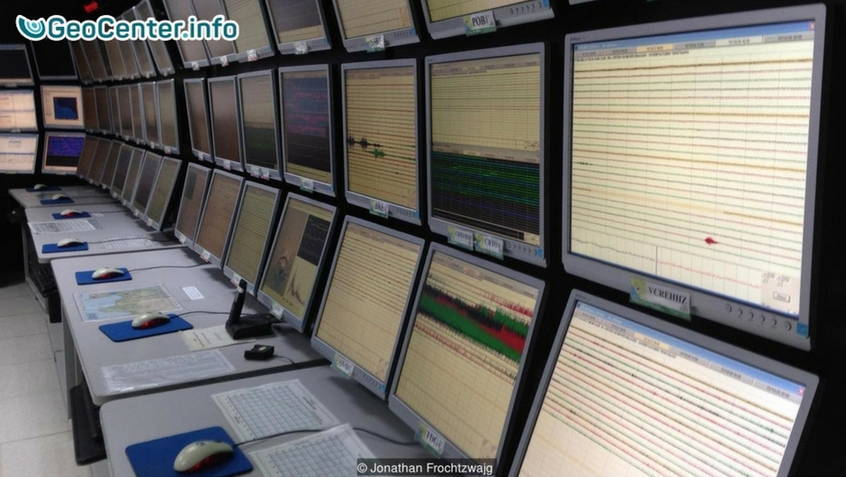
Inside the Vesuvius Observatory (Image credit: Jonathan Frochtzwajg)
As Giovanni Chiodini admitted “In general, unfortunately, volcanology is not a precise science… We have many uncertainties and long-term previsions are at the moment not possible!” But even though exact predictions of volcanic activities are currently indeed not possible to achieve, innovative research of the international group of scientists ALLATRA SCIENCE [6] can help significantly to not only better understand the processes happening inside the Earth, but also to predict upcoming natural disasters and take preventive measures wherever possible. As it is said in the report “On the Problems and Consequences of Global Climate Change on Earth. Effective Ways to Solve These Problems” [7] “…New developments in the field of climatic engineering offer great opportunities and prospects of further scientific activity in this direction. They make it possible to monitor climate, determine the course of events related to climate change based on multifactor analysis, identify compensatory mechanisms of nature, and launch the relevant local or general actions aimed at changing climate conditions. The latest developments of our scientists in this field make it possible already today to identify quite accurately the “focal” or the so called “problem area” on the planet, which will trigger irreversible changes in the near future.” This research can also simplify the complicated task of previsions in volcanology and help with “the development of new methods of forecasting volcanic eruptions and the study of the present magmatic formations of geodynamic environments. Our scientists, who work in the field of neutrino geophysics and neutrino astrophysics, have established certain correlations while observing the behaviour of neutrinos coming from the Earth's interior…” These correlations are depicted using as examples Aira caldera in Japan and Yellowstone Caldera in the U.S.
As Giuseppe De Natale said in his interview with Reuters “We believe the security of millions of people deserves the most powerful methods of inquiry without thinking too much about the economic aspect.” [5]

The city of Naples with millions of people living there (Image credit: Alamy)
And this is indeed true, because when faced with the possibility of such huge natural disasters, there is no time to argue about old theories or doubt the new ones. People’s lives are at stake and if there is really a way to predict natural disasters or at least to take effective measures to minimize their consequences, as research by ALLATRA SCIENCE suggests, we should join our efforts to study further findings of this research and to put them into practice as soon as possible. Every life is important and anything within our power should be done to ensure safety and wellbeing for all people. Because as it is said in the report “On the Problems and Consequences of Global Climate Change on Earth...” [7] “we are all human beings, and all of us have the same place of living ‒ the Earth, one nationality – humankind, one common value – life.”
Ann Bailey
References:
- Yellowstone. The fatal crack has launched the final countdown. (2016). Retrieved December 27, 2016, from https://geocenter.info/en/article/yellowstone-rokovaja-treschina
- Chiodini, G. et al. Magmas near the critical degassing pressure drive volcanic unrest towards a critical state. Nat. Commun. 7, 13712 doi: 10.1038/ncomms13712 (2016).
- Campi Flegrei. (n.d.). Retrieved December 27, 2016, from http://vulcan.fis.uniroma3.it/campi_flegrei/Campi_flegrei.html
- Golovanova, L. V., Doronichev, V. B., Cleghorn, N. E., Koulkova, M. A., Sapelko, T. V., & Shackley, M. S. (2010). Significance of Ecological Factors in the Middle to Upper Paleolithic Transition. Current Anthropology, 51(5), 655-691. doi:10.1086/656185
- Denti, A. (2012). "Super volcano", global danger, lurks near Pompeii. Retrieved December 27, 2016, from http://www.reuters.com/article/us-italy-volcano-idUSBRE8720WI20120803
- Report "PRIMORDIAL ALLATRA PHYSICS" by international group of scientists of the ALLATRA International Public Movement Ed. Anastasia Novyh, 2015 http://allatra-science.org/en/publication/iskonnaja-fizika-allatra.
- Report “On the Problems and Consequences of Global Climate Change on Earth. Effective Ways to Solve These Problems” by the international group of scientists of ALLATRA International Public Movement, 2014 http://allatra-science.org/en/publication/climate
GeoCenter.info


